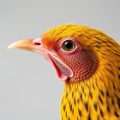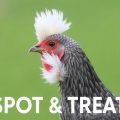Содержание
- What Is Avian Gastric Yeast?
- How AGY Causes Disease: The Biology and Pathogenesis
- Recognizing Clinical Signs
- Diagnosis: How Veterinarians Confirm AGY
- Treatment Options: What Works and What to Expect
- Environmental Control and Flock Management
- Preventing AGY: Best Practices
- Nutritional Considerations During and After Infection
- Breeding and AGY
- Prognosis: What to Expect
- Diagnostics and Research: New Tools and Ongoing Challenges
- Case Management: A Practical Workflow
- Owner’s Perspective: Questions to Ask Your Vet
- Mistakes to Avoid
- Special Situations: Mixed-Species Aviaries and Wildlife
- Research Frontiers and What’s Next
SQLITE NOT INSTALLED
Avian Gastric Yeast, often abbreviated AGY and historically known as “megabacteria,” is one of those frustrating, slow-burn problems that bird owners and avian veterinarians encounter again and again. It doesn’t announce itself with dramatic, fast-moving symptoms the way a respiratory virus might; instead it undermines a bird’s health quietly, leading to weight loss, poor feather condition, changes in appetite, and chronic digestive upset. If you keep small birds — budgerigars, canaries, finches, or parakeets — or if you manage a mixed aviary, understanding AGY is essential. This guide is written to walk you through what AGY is, how to recognize it, how it’s diagnosed, the options for treatment, and best practices for prevention and aviary management. My goal is to leave you confident when you speak with your avian veterinarian and proactive about protecting the birds in your care.
What Is Avian Gastric Yeast?
Avian Gastric Yeast (AGY) is a fungal organism that infects the digestive system of birds, specifically colonizing the junction between the proventriculus and the ventriculus (gizzard). For many years this organism was called “megabacteria” because of its large size when viewed under the microscope. Today it is more accurately referred to by its scientific name, Macrorhabdus ornithogaster, and is classified among yeast-like fungi. The name “gastric yeast” helps emphasize that the organism targets the stomach area, where it interferes with normal digestion and nutrient absorption.
The organism is unusual: it is large compared to many microbes, and it grows in a filamentous, yeast-like form. Because of its slow growth and challenging culture characteristics, AGY can be difficult to detect if you only rely on simple tests. That’s one reason many infections go undiagnosed for a long time, and why affected birds may show chronic or intermittent signs rather than acute collapse.
Which Bird Species Are Affected?
AGY most commonly affects smaller pet and aviary species:
- Budgerigars (parakeets)
- Canaries
- Finches
- Lovebirds and other small parrots
- Occasionally cockatiels, conures, and other psittacines
Larger parrots are less commonly affected, though cases have been reported. Infection can occur in both wild and captive birds, and it tends to spread more easily in dense captive settings where birds share food, water, and housing.
Why Is AGY Important?
AGY matters because it’s a chronic disease that can cause long-term loss of condition, impact breeding success, and lead to secondary infections or nutritional deficiencies. It doesn’t always kill birds quickly, but it can significantly reduce quality of life and lifespan if left untreated. It’s also contagious within captive collections, so early detection and careful management are crucial to protect a flock.
How AGY Causes Disease: The Biology and Pathogenesis
AGY adheres to the lining of the proventriculus — the glandular stomach — and disrupts the normal digestive processes. By colonizing the mucosal surface, the organism interferes with acid production, enzyme activity, and physical digestion. This leads to poor nutrient breakdown and absorption, which in turn causes the bird to lose weight despite a normal or even increased appetite.
AGY does not usually invade deeper tissues; it’s more of a surface colonizer. However, its presence can cause chronic inflammation in the stomach lining, which may result in regurgitation, vomiting, and food retention in the crop. Over time, the bird’s nutritional status may decline, feathers become poor, and secondary problems like bacterial overgrowth in the crop or lower gut can arise.
Understanding this pathogenesis explains why simply offering more food is rarely the solution. The bird’s digestive efficiency is impaired, so the underlying infection must be addressed and supportive care provided to restore proper nutrition.
Recognizing Clinical Signs
Because AGY causes chronic digestive disturbance, signs can be subtle early on. Owners often notice gradual changes before they recognize the pattern. Common signs include:
- Weight loss or failure to thrive
- Chronic regurgitation or vomiting
- Food sticking in the crop or delayed crop emptying
- Increased thirst or polyphagia (eating more than usual)
- Poor feather condition and dullness
- Changes in feces — more watery or variable in consistency
- Exercise intolerance and lethargy
In some birds, owners may notice a sudden decline if the bird is stressed or becomes co-infected with another pathogen. Young birds and newly introduced birds are at higher risk of developing clinical disease if they acquire AGY.
How AGY Differs From Other Gastrointestinal Problems
The signs can overlap with other gastrointestinal diseases, including bacterial infections, crop yeast (Candida), parasitic infections (e.g., trichomonads), and dietary deficiencies. A high index of suspicion is needed, especially when weight loss is disproportionate to the apparent food intake. Because AGY is a specific colonizer of the proventricular area, signs like chronic regurgitation and fluctuating crop function can be suggestive when seen in combination.
Diagnosis: How Veterinarians Confirm AGY
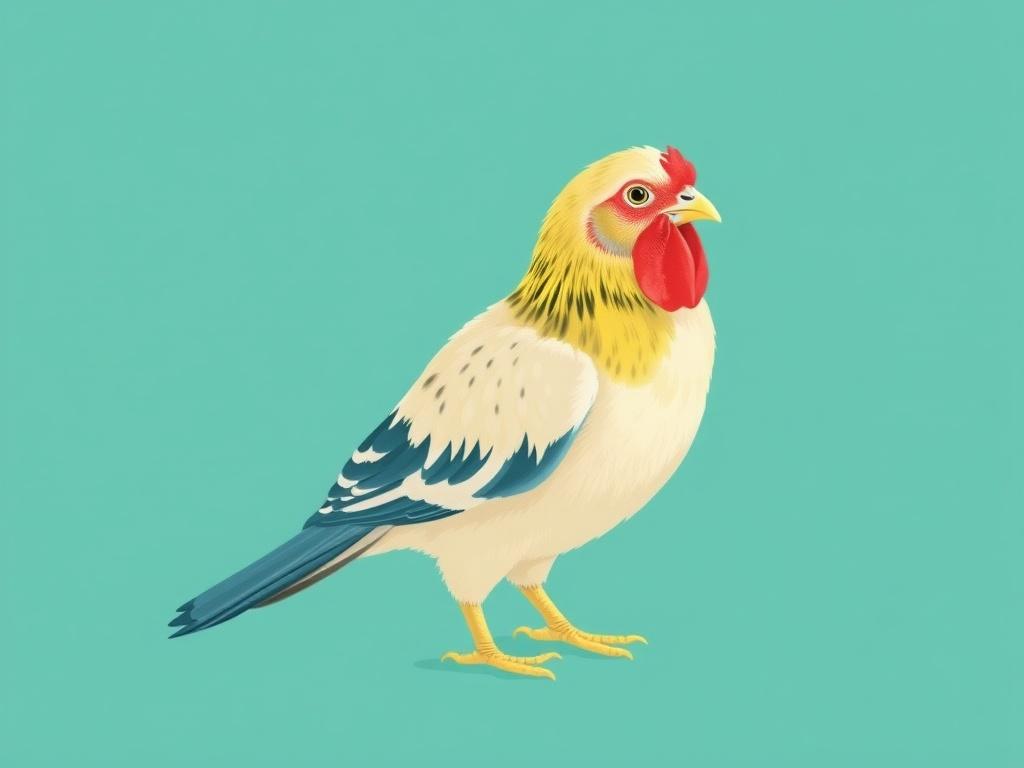
Diagnosing AGY can be tricky. No single test is perfect, and veterinarians typically use a combination of clinical signs, microscopy, specialized stains, culture attempts, and molecular techniques like PCR. Accurate diagnosis often requires good sample collection and communication between the owner and the lab.
Typical Diagnostic Steps
- Detailed history and physical exam, noting weight, crop function, and any regurgitation.
- Fecal and crop swab samples for microscopy with wet mounts and special stains.
- Direct proventricular or crop sampling in some cases, or postmortem examination if a bird dies.
- Molecular testing (PCR) when available — more sensitive than routine microscopy.
- Trial of therapy in ambiguous cases, combined with follow-up testing.
| Diagnostic Method | Pros | Cons |
|---|---|---|
| Microscopic examination (wet mount) | Quick, inexpensive, can reveal typical large yeast-like cells | Insensitive—organisms can be missed; requires experienced personnel |
| Special stains (Periodic acid–Schiff, Gram) | Improves visibility and identification of fungal elements | Still may miss low-level infections; needs lab support |
| Culture | Definitive if positive; allows for further study | Often difficult to grow; slow and not always successful |
| PCR (molecular tests) | Highly sensitive and specific when validated | Not always available; can detect non-viable organisms (interpretation required) |
| Endoscopic or necropsy examination | Direct visualization and sampling of lesions | Invasive or only possible after death; requires specialized equipment |
Sampling Tips for Owners
If your avian veterinarian asks you to bring samples, here are some practical tips to improve the chance of detection:
- Follow the vet’s instructions about fasting or not fasting before sampling — different labs prefer different protocols.
- Collect fresh feces and place them in clean containers; avoid contamination with feathers or bedding.
- Crop swabs or regurgitated material (if present) can be very informative — handle them gently and deliver to the lab quickly.
- Inform the lab if the bird has received antifungal treatments or antibiotics recently, as this can change test results.
Treatment Options: What Works and What to Expect
Treating AGY requires a multi-pronged approach. The mainstay of therapy is antifungal medication that can act in the gut, combined with supportive care to correct dehydration and malnutrition. Environmental and flock management changes are also necessary to prevent reinfection.
Antifungal Therapy
One of the most commonly used medications for AGY is amphotericin B formulated for oral administration. It’s favored because it acts directly in the gastrointestinal tract and is effective against fungal organisms colonizing the stomach lining. However, the exact regimen — frequency, duration, and formulation — is something an avian veterinarian will prescribe based on the bird’s weight, species, and clinical severity.
Other antifungals like itraconazole have been used in some cases, often when systemic treatment is indicated or when amphotericin is not tolerated, but response can be variable. Some medications used for other fungal infections are not effective against AGY, so it is not appropriate to use a general antifungal without veterinary guidance.
Important: Do not attempt to medicate your bird with prescription antifungals without an avian veterinarian’s instructions. Antifungal drugs can have side effects and dosing must be precise for small birds.
Supportive Care
Supportive care is essential:
- Fluids: Dehydrated birds need rehydration, sometimes via subcutaneous or intravenous fluids administered by a veterinarian.
- Nutrition: High-calorie, easily digestible foods or assisted feeding may be required until the bird can process food normally. Nutritional supplements and vitamins may help recovery.
- Crop management: If crop stasis is present, the vet may recommend crop flushes or temporary feeding tubes in severe cases.
- Treatment of secondary infections: Antibiotics may be necessary if bacterial overgrowth is suspected.
Duration of Treatment and Follow-up
Expect treatment courses to be long — several weeks at minimum, and sometimes months in persistent cases. Follow-up testing is crucial to confirm clearance, since clinical improvement can precede full eradication. Relapses are possible, and some birds become chronic carriers even after clinical recovery, which underscores the need for careful monitoring and biosecurity.
Environmental Control and Flock Management
Because AGY spreads most readily in captive settings where birds share food and water, preventing transmission requires attention to hygiene, quarantine, and husbandry.
Practical Steps for Aviaries and Households
- Quarantine any new bird for an appropriate period and test for AGY if there is any concern.
- Clean and disinfect feeders, waterers, perches, and cage surfaces regularly. Remove organic debris frequently.
- Use disinfectants that are effective against fungi and follow label directions for contact time. Many household disinfectants can inactivate AGY if used properly; check with your avian vet or extension resources for recommendations.
- Avoid overcrowding, which increases stress and transmission risk.
- Maintain stable temperatures and proper ventilation; stress and poor environmental conditions predispose birds to disease.
- Consider separate feeding bowls rather than communal feeders in mixed-species aviaries to reduce cross-contamination.
Sanitation: What Works
A combination of mechanical cleaning (removal of droppings and food waste) followed by appropriate disinfectant application is the most effective approach. Heat and drying are also useful; fungal organisms are often susceptible to high temperatures and desiccation, so thorough cleaning and drying of dishes, toys, and perches reduces infectious material.
Preventing AGY: Best Practices
Prevention is more effective than treatment. If you manage an aviary or keep multiple birds, invest in routine screening and good husbandry.
Key Preventive Measures
- Quarantine new arrivals and monitor closely for weeks before introducing them to the flock.
- Keep feeding and watering equipment clean; change water daily and scrub bowls regularly.
- Avoid sharing feeding equipment between cages unless properly sanitized between uses.
- Minimize stressors: keep routines predictable, provide enrichment, and avoid sudden environmental changes.
- Feed a balanced diet suited to the species; malnutrition can predispose birds to disease.
- Consider periodic fecal monitoring in flock situations, particularly if birds are breeding or being moved.
Nutritional Considerations During and After Infection
Because AGY compromises digestion, dietary management is critical. The bird needs adequate calories and nutrients in forms the damaged digestive tract can handle. Specialized diets — soft, moistened foods or formulated hand-feeding diets — may be necessary temporarily. Supplementing with probiotics might help restore normal gut flora after antimicrobial treatments, but evidence is mixed and choices should be made with a veterinarian.
Avoid sudden diet changes, and work with your avian vet to design a feeding plan tailored to your bird’s species and condition. Weight monitoring and body condition scoring are practical ways to track recovery.
Breeding and AGY
Breeding flocks need special attention. AGY can impact reproductive success by reducing body condition and egg production, and infected parent birds might transmit the organism to chicks either directly or through contaminated feeding utensils and nest material.
If AGY is identified in a breeding flock:
- Isolate affected birds and test cage-mates and offspring.
- Delay breeding until birds are healthy and cleared of infection.
- Sanitize nest boxes, feeders, and waterers between pairs.
- Monitor chicks closely for early signs and test if concerned.
Prognosis: What to Expect
Prognosis varies. Birds treated early and supported nutritionally usually fare well, while birds that are severely emaciated, old, or simultaneously infected with other pathogens have a more guarded prognosis. Even after apparent clinical recovery, periodic monitoring is important because reinfection or relapse can occur. Many birds respond favorably to targeted antifungal therapy plus proper care.
Diagnostics and Research: New Tools and Ongoing Challenges
Advances in molecular diagnostics have improved AGY detection. PCR assays targeting specific DNA sequences of Macrorhabdus ornithogaster are more sensitive than routine microscopy and can detect low-level carriage. However, availability of validated PCR tests varies by region and by laboratory, and interpretation requires clinical correlation — a positive PCR may not always indicate active disease, particularly if the bird has been treated recently or if the sample contains non-viable organisms.
Research continues into better culture methods, optimized treatment protocols, and the organism’s ecology. Veterinarians and researchers are working to better define carrier states, environmental persistence, and the full host range of AGY.
Why Some Tests Produce Confusing Results
Factors that complicate interpretation include:
- Intermittent shedding — a bird may test negative one day and positive later.
- Prior treatment — antifungals can reduce organism numbers but not fully eradicate them.
- Sample type and timing — crop swabs may be more informative than random fecal samples in some cases.
- Laboratory expertise — detecting AGY microscopically requires experience.
Because of these complexities, many vets combine tests with clinical judgment and trial therapies when necessary.
Case Management: A Practical Workflow
When you suspect AGY in your bird, a typical clinical workflow might look like this:
- Initial evaluation by an avian veterinarian, including weight, crop assessment, and physical exam.
- Collection of fecal and crop samples for microscopy and possible PCR.
- Begin supportive care: correct dehydration, provide supplemental nutrition, and stabilize the bird.
- If AGY is confirmed or strongly suspected, start antifungal therapy under veterinary supervision.
- Implement environmental control measures to reduce transmission risk within the household or aviary.
- Schedule follow-up exams and repeat testing to assess response and confirm clearance.
This approach balances rapid stabilization with diagnostic certainty and long-term control.
Owner’s Perspective: Questions to Ask Your Vet
When you’re sitting with your avian veterinarian, these are helpful questions to guide the discussion:
- What diagnostic tests do you recommend for my bird and why?
- What are the treatment options, and what are the expected side effects?
- How long will treatment last, and how will we monitor success?
- What specific husbandry changes should I make to prevent spread?
- What is the likelihood of relapse or chronic carriage?
- Are there alternatives if my bird doesn’t respond to first-line therapy?
Being prepared with these questions helps ensure a partnership with your vet and a coordinated plan for the bird’s care.
Mistakes to Avoid
Some common missteps by well-meaning owners include:
- Self-medicating with antifungal drugs intended for other species or for topical use — this can be ineffective or dangerous.
- Delaying veterinary evaluation until the bird is severely ill — early intervention improves outcomes.
- Ignoring hygiene and quarantine measures after treating one bird, which leads to reinfection of others.
- Assuming a single negative test rules out AGY — retesting may be needed.
Avoiding these mistakes helps ensure that treatment and prevention efforts are effective.
Special Situations: Mixed-Species Aviaries and Wildlife
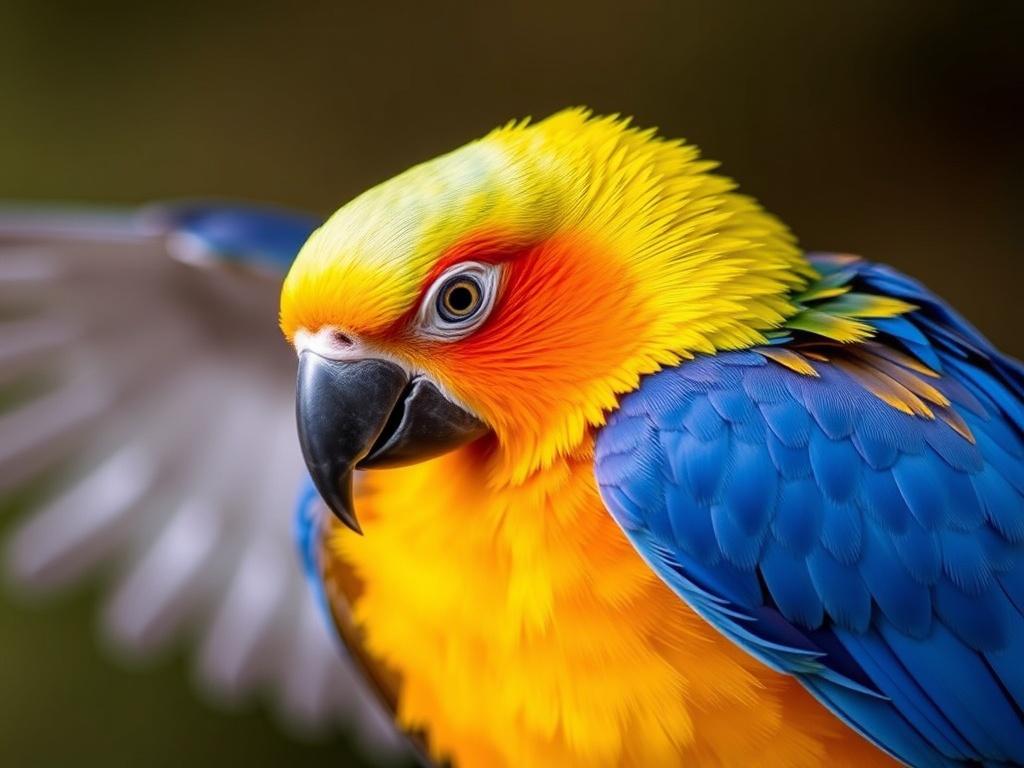
In mixed collections, cross-species transmission is a concern. Some species are more resistant and can act as reservoirs. If AGY appears in a mixed aviary, consider:
- Testing all species that have close contact.
- Separating susceptible birds from species that can carry the organism asymptomatically.
- Enhancing overall biosecurity and limiting inter-cage contact during an outbreak.
Wild birds can carry AGY, so outdoor aviaries open to wild bird contact may have an increased risk. Minimizing interaction between wild and captive birds reduces chances of disease introduction.
Research Frontiers and What’s Next
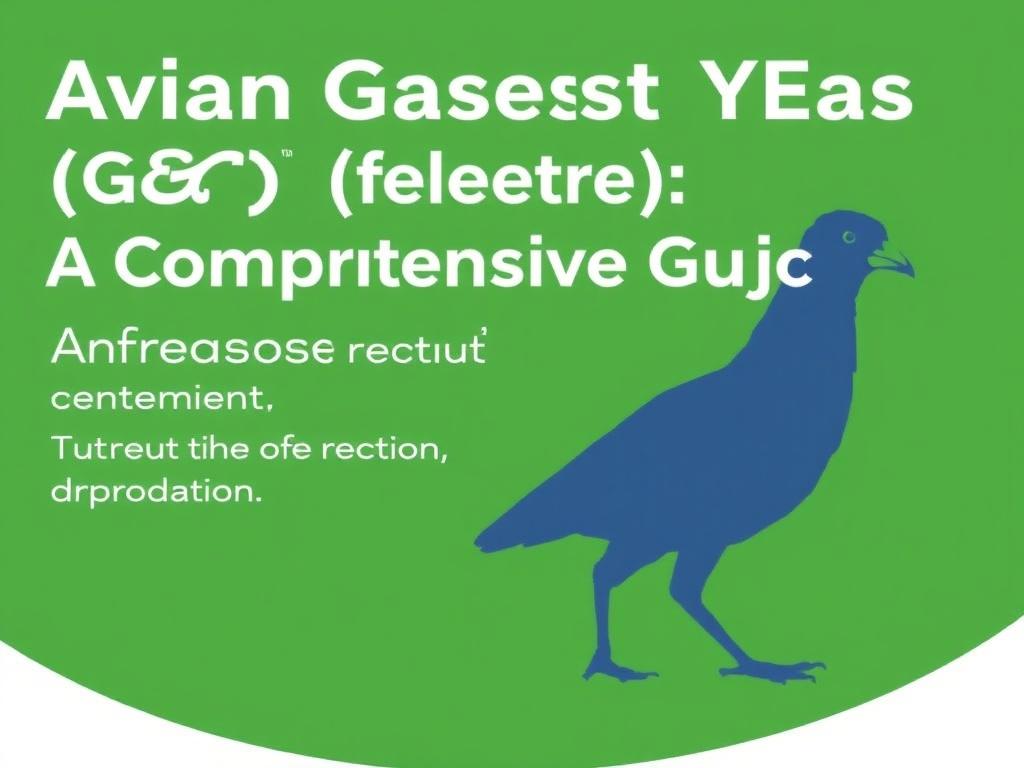
Researchers are working on several fronts:
- Refining PCR and other molecular tools for faster, more accessible AGY testing.
- Studying environmental persistence to develop better disinfection regimens.
- Exploring alternative therapies or adjuvants to reduce treatment duration and relapse rates.
- Understanding host immune responses to AGY to potentially develop vaccines or immune-supportive treatments in the future.
Although progress is steady, practical management today still relies on early detection, appropriate antifungal therapy, and robust husbandry.
Community and Support
If you manage multiple birds or belong to an avian club, sharing information with other keepers and your vet can help spot outbreaks early and coordinate testing and control measures. Many avian forums and local societies also have experienced breeders and hobbyists who can offer practical advice about husbandry improvements and aviary design to minimize disease spread.
Conclusion
Avian Gastric Yeast is a persistent, sometimes stealthy pathogen of birds that requires vigilance, good diagnostic strategy, coordinated treatment, and strong biosecurity to manage effectively. While it can be frustrating — tests may be inconclusive, treatment durations long, and relapses possible — many birds recover well when diagnosis is timely and therapy is combined with supportive nutrition and careful environmental control. Partnering with an experienced avian veterinarian, maintaining clean and stable housing, and watching your birds closely for subtle changes are the best defenses against AGY. If you suspect infection in your bird or flock, act promptly: early action, patience, and consistent follow-up give your birds the best chance of returning to robust health.


